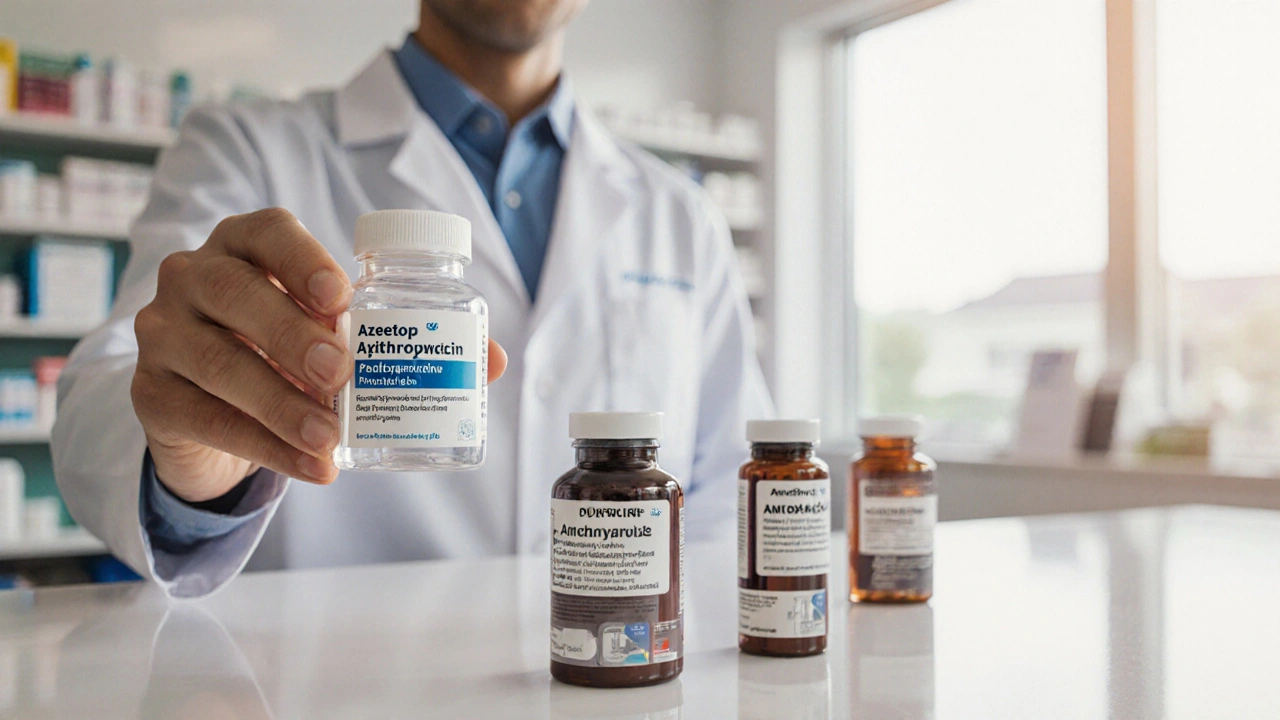Antibiotic Side Effects: What You Need to Know
When dealing with antibiotic side effects, unwanted reactions that occur after taking an antibiotic medication. Also called adverse drug reactions, they range from mild stomach upset to serious allergic responses. Antibiotics themselves – the drugs used to kill harmful bacteria – are the trigger for these effects. Understanding how they work helps you spot problems early and talk to your doctor confidently.
Common Categories of Side Effects
One of the biggest groups is gastrointestinal upset, symptoms like nausea, diarrhea, and abdominal pain that many people feel after a course of pills. Your gut flora gets disturbed, so you might notice loose stools or a loss of appetite. Another frequent issue is allergic reactions, immune‑mediated responses such as rash, itching, swelling, or in rare cases, anaphylaxis. These reactions happen because the body mistakenly flags the drug as a threat. Other side effects include photosensitivity (skin gets sensitive to sunlight) and dizziness, but the two categories above cover the majority of patient complaints.
Side effects don’t exist in a vacuum. They are often shaped by drug interactions, how an antibiotic mixes with other medicines, supplements, or foods you take. For example, taking a fluoroquinolone with antacids can lower the antibiotic’s absorption, reducing effectiveness and increasing the chance of resistance. Likewise, combining certain antibiotics with blood thinners may heighten bleeding risk. Knowing what you’re mixing helps you avoid unexpected problems and keeps the treatment on track.
Beyond the immediate reactions, antibiotics can have lasting impacts on the microbiome, the community of friendly bacteria living in your gut and on your skin. Disrupting this ecosystem can lead to issues like yeast infections or C. difficile colitis, a serious intestinal infection. While not every user will experience these, the risk rises with broad‑spectrum antibiotics or repeated courses. Keeping the microbiome healthy – through probiotics or diet – can lessen the blow.
All these pieces fit together in a simple chain: antibiotic side effects encompass gastrointestinal upset, allergic reactions, and other symptoms; they require careful monitoring, especially when drug interactions are present; and they influence long‑term gut health. When you understand the chain, you can act faster. Watch for red flags like persistent diarrhea, rash, or shortness of breath, and report them to your healthcare provider right away.
Managing side effects starts with preparation. Ask your pharmacist about the best way to take the drug – with food, on an empty stomach, or at a certain time of day. Keep a list of all meds and supplements you use, and share it before a prescription is written. If you have a history of allergies, mention it; the doctor may choose a different class of antibiotic. For gut‑related issues, consider a probiotic that contains Lactobacillus or Bifidobacterium during and after treatment.
Our collection below pulls together practical guides, comparison charts, and safety tips that dive deeper into each of these topics. Whether you’re looking for a quick rundown of common reactions, a detailed explanation of how antibiotics interact with other drugs, or advice on protecting your microbiome, you’ll find articles that break the science down into easy‑to‑follow steps. Keep reading to arm yourself with the knowledge you need to stay safe while antibiotics do their job.

Azeetop vs. Other Antibiotics: How Azithromycin Stacks Up
A side‑by‑side look at Azeetop (azithromycin) versus doxycycline, clarithromycin, amoxicillin, and levofloxacin, covering uses, dosing, cost and safety.
